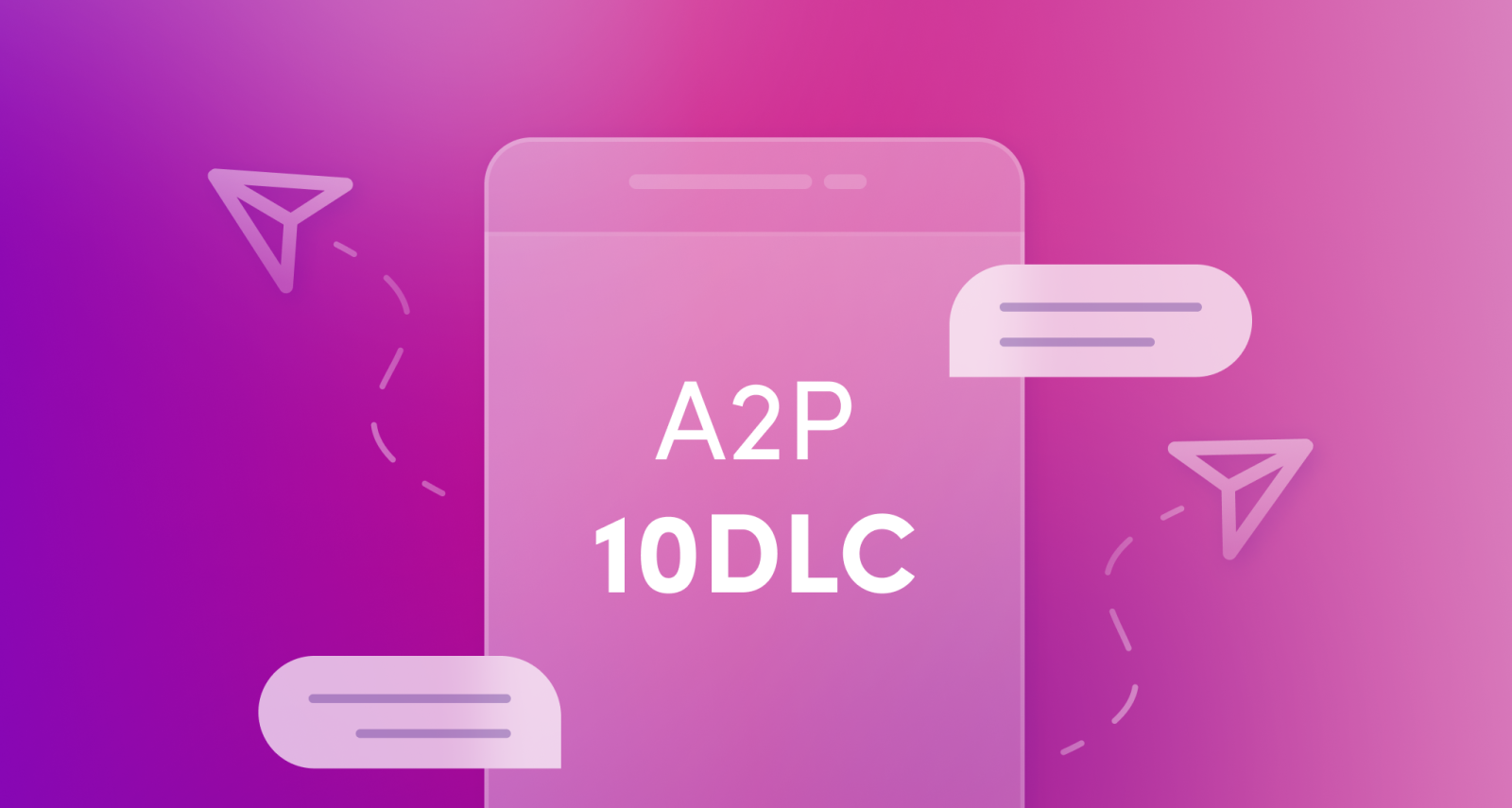A2P 10DLC Update


Quick tl;dr summary
A2P 10DLC (application-to-person 10-digit-long-code) registration is mandatory if you use 10-digit local numbers for mass texting. You can use your same local number in your Clearstream account. You don't have to create a new number.
Registering your local number for A2P will result in increased message throughput in most cases, improved deliverability, and less carrier filtering when texting with your local number.
Last, this change does not affect short codes at this time. You are still able to use both short codes and local numbers within your Clearstream account.
Watch a 2-minute A2P 10DLC explainer video
What are A2P and P2P local numbers?
A2P 10DLC numbers
Application-to-person 10-digit long codes (A2P 10DLC) are the most recent and extensive effort by wireless carriers to mitigate text spam by identifying the who and what behind each 10-digit local number sending mass texts. This change is mandatory if you're looking to use your 10-digit local number for mass texting. A2P 10DLC registered numbers will see improved message delivery, faster sending, and less carrier filtering than non-registered 10-digit numbers.
In short, A2P 10DLC is the new and first commercial route for 10-digit local numbers.
P2P numbers
Until now, 10-digit local numbers have historically been classified and known as P2P (person-to-person) numbers. They are meant for one-to-one messaging, not mass texting. A perfect example would be your Uber or Lyft driver texting you to let you know they have arrived. An incorrect use case (and widely-used until now) would be a church texting thousands of people through a P2P 10-digit number. Carriers frown on this, and often block messages they deem as a 'mass text' instead of a P2P text interaction. This is why churches who have historically done mass texting with local numbers have trouble with low delivery rates, very slow delivery (P2P numbers send at 1 message per second), and heavy filtering, especially if texts include links.
P2P 10-digit numbers are currently, and have always been, a non-commercial carrier route. With the rollout of A2P, carrier filtering will increase for non-A2P-registered 10-digit numbers.
5-digit short code numbers
Before moving on, it's worth noting that Clearstream has always offered, and continues to offer local numbers (now A2P 10DLC) and dedicated short codes. Carriers have always made clear that short codes are the correct and best means for mass texting. If your church does a good bit of texting, or you're a large church, consider moving to a dedicated short code, as they are the single best option for mass texting.
Necessity for A2P 10DLC carrier routes
Total A2P (application to person) messaging is expected to reach 3.5 trillion messages by 2023. This means that the good (ie - churches having the ability to text their people) and bad (ie - text spam and phishing) use cases will only increase. A2P 10DLC is an industry-wide initiative to help ensure good actors can communicate with their people, while mitigating bad actors using text as a method for spam and phishing.
Now that we've clarified what A2P 10DLC is, and it's necessity in the texting ecosystem, let's look at the two components of registering an A2P 10DLC number, and what you'll need to do.
Two A2P 10DLC components - Brand Registration and Use Case
We've established that A2P 10DLC is a new commercial 'route' or highway on carrier networks, as opposed to a P2P route. Carriers will now require identification of who is using what number. This is called brand registration.
Brand Registration Requirements - the following pieces of information are now required, and will be collected when setting up a new 10-digit local number in your Clearstream account:
Church Name
Church Address
Church Website
Church EIN
Use Case - Carriers also want to know what kind of content is on each 10 digit local number. This is called the use case. If you're a church using Clearstream, we handle this side of registration automatically. There is nothing you need to do.
Depending on how accurate the Brand Registration information you provide when registering your number within your Clearstream is compared with external databases (IRS, D&B, etc), you'll be eligible for certain types of Use Cases. The two general types of Use Cases Clearstream will register your number will be either "Charity" or "Standard" use case with the carriers, depending on whether or not your organization is a registered 501c3.
How to register your 10-digit local number for A2P 10DLC
Once you create a 10-digit local number (we call them long codes) in your Clearstream account, you will see a notification on your Dashboard, asking you to register your number, where we'll ask for the bits of information listed above. It only takes a couple minutes to fill out the mandatory information. If you already have a long code setup in your account, you'll receive the same notification next time you login, asking you to register your number.
A2P 10DLC is a constantly evolving initiative within the texting ecosystem, and we expect some things to change or be updated in the near term. As they do, we will update this blog post to be as accurate as possible. If you have any questions regarding A2P 10DLC, reach out. We'd love to help!